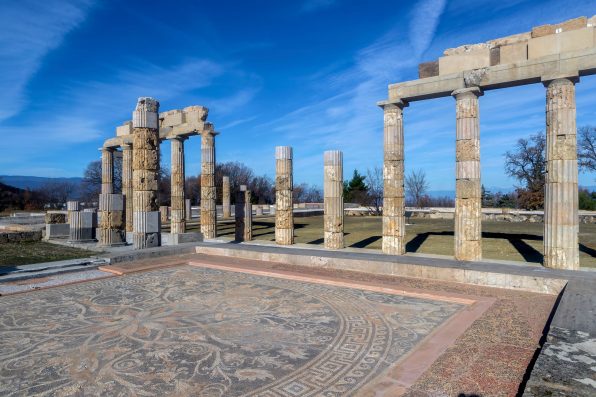After the death of Alexander the Great in 323 B.C., the whereabouts of his tomb have remained a mystery.
However, experts were able to track down the final resting place of three of the ruler’s relatives, located at the “Great Tumulus” site in the town of Vergina in northern Greece. But now, a new study has suggested that previous research had gotten the order of the tombs mixed up.
In 1977, researchers uncovered the site of Great Tumulus at the necropolis of Aegae, which was once the capital of the ancient kingdom of Macedonia.
There, they identified a trio of tombs that they labeled Tomb One, Tomb Two, and Tomb Three. It is believed that they contain the bodies of Alexander the Great’s father, King Philip II, his half-brother, King Philip III Arrhidaeus, and his son Alexander IV.
Alexander the Great ruled over Macedonia, one of the largest empires in the ancient world. Between 336 and 323 B.C.E., it stretched from Egypt to India. His father, King Philip II, held the throne between 359 and 336 B.C.E. and amassed the enormous Macedonian army that Alexander would later lead. Alexander’s older half-brother, Arrhidaeus, reigned for six years after his death.
Initially, Philip II was suspected to be in Tomb Two. Arrhidaeus was thought to be in Tomb One, while Alexander IV was in Tomb Three. The most recent review argues that Philip II is actually in Tomb I and Arrhidaeus is in Tomb Two. The study was published in Science Direct.
X-ray analysis was used to identify the remains. According to the authors of the study, the skeleton in Tomb One more accurately fits the description of Philip II. Historical documents state that the king’s leg was injured by a lance in 339 B.C.E., which left him lame. The skeleton in Tomb One had a fused knee joint, confirming that the occupant was Alexander’s father.
They also determined that Tomb Two contained Arrhidaeus, who succeeded Alexander the Great after he died of an illness that was most likely malaria or typhoid. Some scholars maintain the belief that King Philip II is in Tomb Two because of a traumatic injury around the eye of the skeleton.
Philip II was known for being hit in the eye with an arrow during the siege of Methone in 354 B.C.E. However, the latest findings have proven that past reports of facial injuries on the Tomb Two skeleton were inaccurate.

Sign up for Chip Chick’s newsletter and get stories like this delivered to your inbox.


